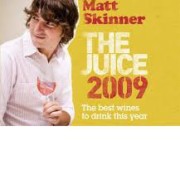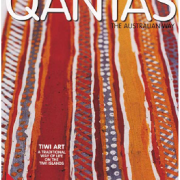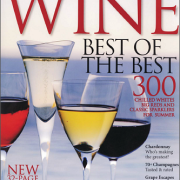Dennis and Bonnie Vice were pioneers of organic viticulture and farm based tourism in the Coonawarra.
The region is famous for its superb reds, produced on the districts terra rosa soils. The red soil is spread over a limestone base, which provides excellent drainage, deep rooting and deep soil moisture storage – ideal country for grapes. The southern location and cool ripening season permits late picking and produces a superior flavour and acid balance in the grapes juice.
Dennis and Bonnie Vice saw the potential in the Coonawarra when they visited the area in 1984 while holidaying from the USA. They returned in December 1985 to settle in Australia and hand planted the first vines in 1986. They selected a 10 acre site known as Highbank.
The location of the different varieties they planted was selected carefully on the basis of a detailed soil survey, made with the assistance of a backhoe. Depending on subtle differences in the topsoil depth and limestone content, they planted six clones of Cabernet Sauvignon (60% area of reds), some Merlot (30%) and Cabernet Franc (10%). The Chardonnay that they originally planted has been grafted over to Cabernet Sauvignon and Merlot, as the Chardonnay proved too difficult in the high rainfall climate of the south-east being particularly prone to powdery mildew.
The name ‘Highbank’ comes from the famous strip of red ground – the high bank of ground that is the central spine of the true Coonawarra wine district. Dennis claims “Red wines grown on this special land can compete on a quality basis with the finest wines produced anywhere else in the world.”
The perception of low input sustainable agriculture is an important part of the reason why many customers buy their wines (they do not claim organic status at present) but the hand made wines stand up very well on their own with fine flavours and finish.
Organic production fits very much into their concept of how high quality wines should be made. The intense varietal flavours are very much linked to subtle changes in the soil. Reduced output from the vine which may result from organic growing enables the vine to put all its effort into the fewer fruit bunches and naturally opens up the canopy to allow sunlight in. They chose the Coonawarra partly because of reliable rainfall patterns, so there have been no horror years of excessive rainfall at harvest and they have little problem with Botrytis.
Dennis was a viticulture lecturer for the South Australian Government for 15 years and he takes his grape growing very seriously. A heavy emphasis on monitoring, close inspection and detailed management is stressed. He believes that under an organic regime the canopy must be kept open and the grower must not be greedy for tonnage, concentrating only on quality berries.
The close detail they lavish on the operation leads Bonnie to refer to each vintage as “like having a child every year”. Dennis will even drive behind the truck on the way to the crusher to ensure that no harm comes to the product, and they are always present at the bottling.
The inter-row area has been seeded with mixes of rye grass and fescue depending upon the soil type. The less vigorous varieties of grapes are used on the deeper soils. Cover crop management is essential for Apple moth control. The moth feeds on broad leaf weeds, which remains controlled by competing with the shallow root grasses which only marginally compete with the vines for moisture. The sod is therefore maintained as dense as possible especially during the moth season. The cover crop can also be used to transpire more, pulling excess moisture off the vine, or can be cut very low when the vine needs moisture and for frost control. The main problem is with the longevity of the cover crop and in some years alternate rows need to be re-sown.
A Clemens under vine weeder saves a lot of work in the vineyard. Frost danger is too high in this area for under-vine mulching to be considered.
Dennis and Bonnie have targeted five star restaurants in twenty countries around the world for their product. In Sydney they can be bought at the cities top venues such as the Rockpool, Tetsuya, Bel Mondo and Aria at the Sydney opera house, in Adelaide at the top spots ‘The Grange’of the Hilton International, Cibo’s Italian Restaurant , Ying Chow Chinese and the Jasmond Indian Restaurant.
Robert Parker reviewed the pressed Highbank Coonawarra Red wine for the ‘Wine Advocate’ and wrote: “A very impressive wine.” Full-bodied, with outstanding richness, a cherry, multi-layered texture, admirable purity, and superb equilibrium and palate presence, this is a beautifully knit, restrained yet intensely-flavoured Cabernet Sauvignon based wine that is only hinting at its ultimate potential.”
The accommodation units at Highbank are located right amongst the vines and offer luxury, views, spas and a tranquil setting. The Japanese tourists love it!
Dennis and Bonnie love the contact with people which the Bed and Breakfast bring. Dennis says “it is more than a passing contact, people love to come back to stay and the B & B and tastings advertise and promote each other. A lot of restaurateurs come here to stay because of the wines and we enjoy the experience of meeting with the people who sell and enjoy our wines.”
He continues “we are unrelenting about how we are going to do this, we recognise the vines are capable of producing the intensity of colour, aromas and flavour.”
“We think many conventional growers are too greedy for tonnage and miss quality altogether.”
“The real old-timers basically followed organic principles, except for their fetish about weeds. They are so paranoid about them.”
“Our wines are a good advertisement for what can be achieved with organic methods and we are very pleased to have the opportunity to talk to my students, visiting professionals and especially our customers who enjoy our wines, about the methods we use.”






